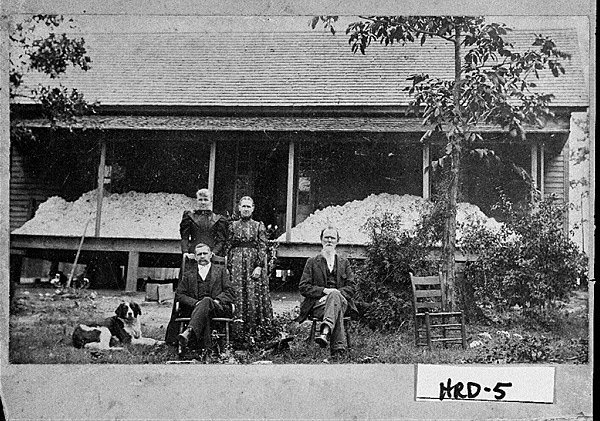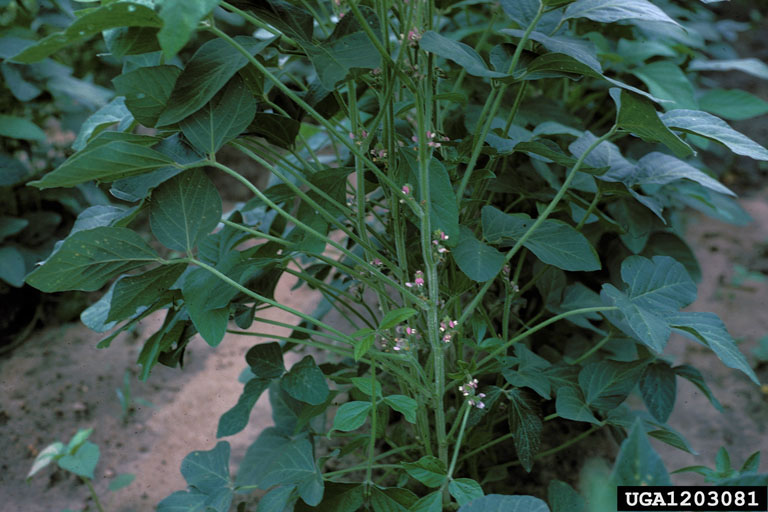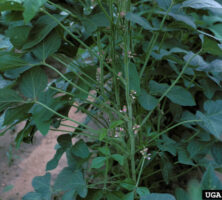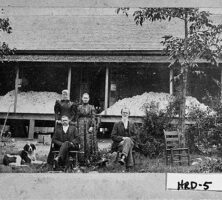The Agricultural Adjustment Act (AAA) was a federal law passed in 1933 as part of U.S. president Franklin D. Roosevelt’s New Deal. The law offered farmers subsidies in exchange for limiting their production of certain crops. The subsidies were meant to limit overproduction so that crop prices could increase.
After the U.S. Supreme Court struck down the AAA in January 1936, a slightly modified version of the law was passed in 1938. The program was largely successful at raising crop prices, though it had the unintended consequence of inordinately favoring large landowners over sharecroppers.
Declining Crop Prices
The Great Depression hit Georgia especially hard, but trouble began for the state’s economy even before the stock market crash of 1929. Many states enjoyed a manufacturing and production boom throughout the 1920s, spurred by an increase in consumer goods and new access to credit. But one of Georgia’s major industries, textiles, was hamstrung in at least three ways.

Courtesy of Georgia Archives.
First, the boll weevil, introduced to the state in 1915, greatly reduced state cotton yields. Georgia’s cotton acreage declined from 5.2 million acres in 1914 to 2.6 million in 1923. Second, overproduction in other parts of the country and foreign competition increased the supply of cotton and decreased the price. Between 1918 and 1928, the national price of cotton decreased from 28.8 cents/pound to 17.98 cents/pound. The price of cotton bottomed out in 1931, at 5.66 cents/pound. Finally, new fashions, such as the flapper dress, which used less fabric as well as new man-made materials, including rayon, decreased demand for cotton. These factors combined to push many small family farmers off their land. Many either moved into cities or became sharecroppers.
In addition to the state’s economic challenges, Georgia’s soil was in poor health. The state’s decades-long dependence on cash-crop agriculture encouraged famers to plant every available acre with cotton, which eventually depleted the soil and led to erosion. By the beginning of the Great Depression, Georgia’s cotton, farmers, and land were all in a poor state.
Results of the AAA
Roosevelt, familiar with Georgia’s economy through his frequent visits to Warm Springs, proposed the AAA within his first 100 days of office. The act passed both houses of Congress in 1933 with the unanimous support of Georgia senators and representatives. In essence, the law asked farmers to plant only a limited number of crops. If the farmers agreed, then they would receive a federal subsidy. The subsidies were paid for by a tax on the companies that processed the crops. By limiting the supply of target crops—specifically, corn, cotton, milk, peanuts, rice, tobacco, and wheat—the government hoped to increase crop prices and keep farmers financially afloat.

Courtesy of Georgia Info, Digital Library of Georgia.
The AAA successfully increased crop prices. National cotton prices increased from 6.52 cents/pound in 1932 to 12.36 cents/pound in 1936. The price of peanuts, another important Georgia crop, increased from 1.55 cents/pound in 1932 to 3.72 cents/pound in 1936. These gains were not distributed equally, however, among all Georgia’s farmers. Subsidies were distributed to landowners, not to sharecroppers, who were abundant in Georgia. When the landlords left their fields fallow, the sharecroppers were put out of work. Some landowners, moreover, used the subsidies to buy efficient new farming equipment. This led to even more sharecroppers being put out of work because one tractor, for example, could do the job of many workers.
In 1936 the Supreme Court struck down the AAA, finding that it was illegal to tax one group—the processors—in order to pay another group—the farmers. Despite this setback, the Agricultural Adjustment Act of 1933 had set the stage for nearly a century of federal crop subsidies and crop insurance. In 1936 Congress enacted the Soil Conservation and Domestic Allotment Act, which helped maintain production controls by offering payment to farmers for trying new crops, such as soybeans. Crop insurance was included in the new Agricultural Adjustment Act of 1938, which paid subsidies from general tax revenues instead of taxes on producers.

Photograph by Carl Dennis, Auburn University. Courtesy of IPM Images
The legacy of crop subsidies and crop insurance continues well into the twenty-first century. In 2012 the U.S. Department of Agriculture spent more than $14 billion insuring farmers against the loss of crop or income. In 2014, 2.86 million acres of farmland were insured in Georgia. Cotton, peanuts, and soybeans are the most insured crops in the state by acreage, and more than 95 percent of Georgia’s peanut, cotton, and tobacco acreage was insured in 2014.










